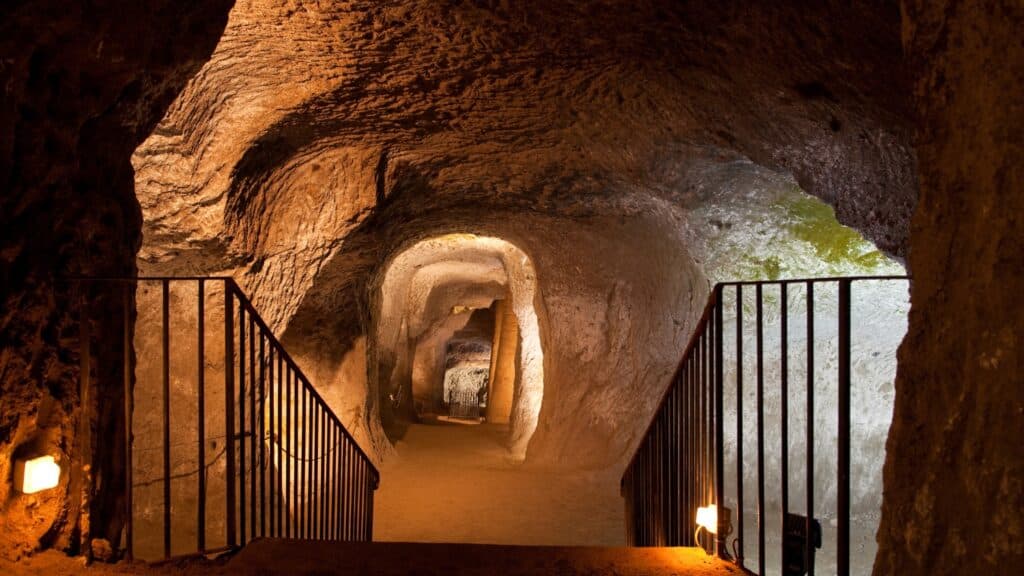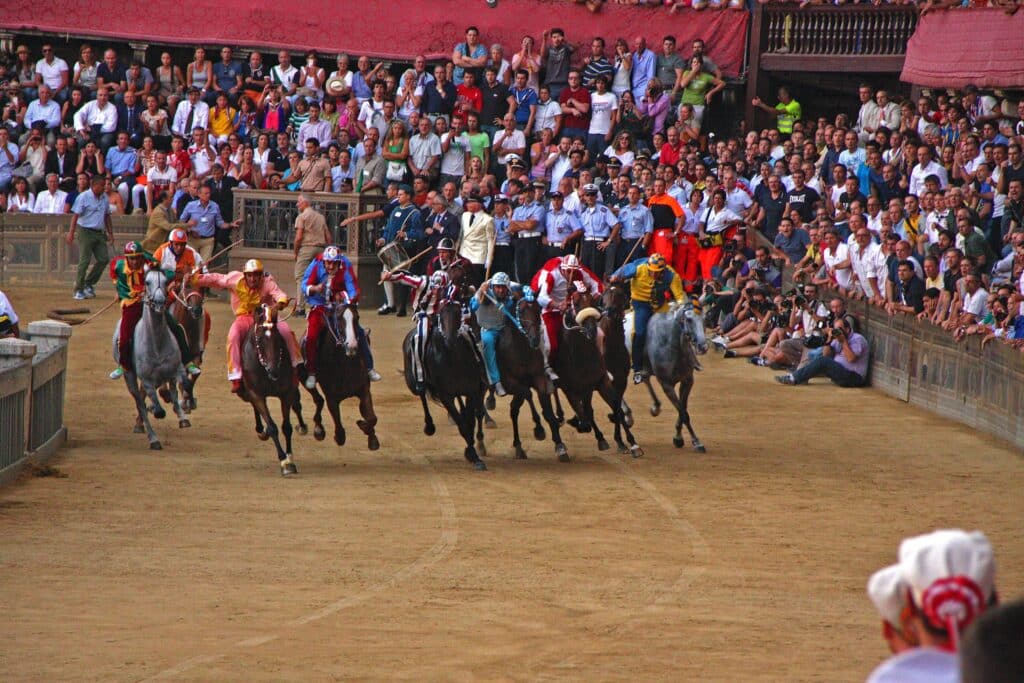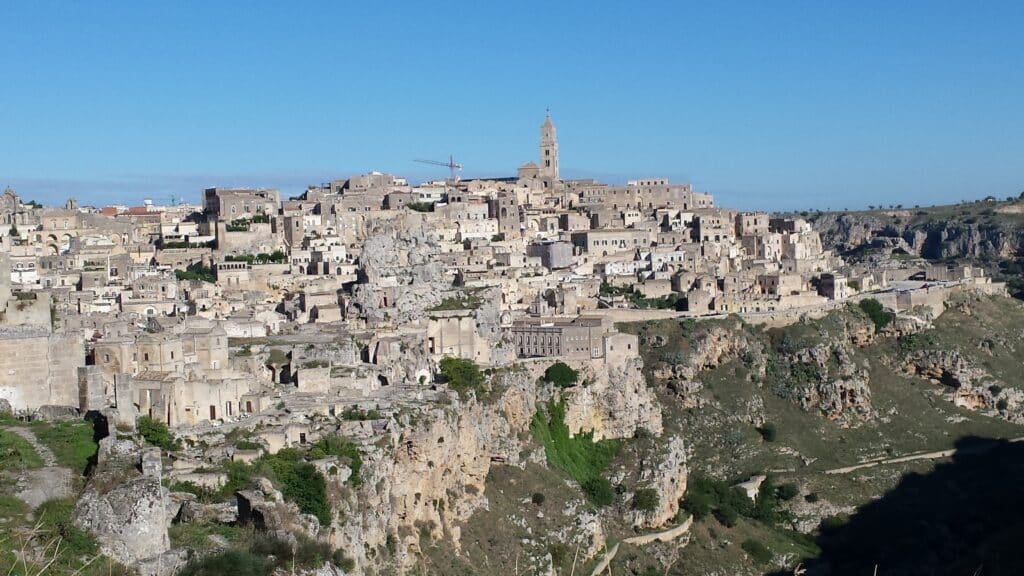
Top 10 Small Museums and Attractions in Italy
There’s no shortage of world-class museums and galleries in Italy but a visit to a lesser-known, smaller attraction delivers a crowd-free and often equally enriching alternative. These hidden pint-sized gems don’t have the size and grandeur of the country’s big hitters but they’re a great way to step straight into the local culture and history and are often full of unexpected surprises.
From wine to mosaics and motorcars, these are some of our favourites, with many included on our gastronomic walking tours in Italy.
Unique Wine Museum, Piedmont
Wine aficionados everywhere will love the Banca del Vino, where you’ll find over 100,000 bottles from 300 different producers from all over the Italian peninsula. The brainchild of Carlo Petrini, the founder of the global Slow Food movement, the Wine Bank is housed within Italy’s University of Gastronomic Sciences in the village of Pollenzo in Piedmont. Enjoy guided tastings of specific regions and curated pairings with salami, cheese or chocolate.
The Royal Castle of Racconigi
Also in Piedmont, the extraordinary UNESCO World Heritage Royal Castle of Racconigi overlooks 170 hectares of parkland in the province of Cuneo. Highlights of the palace include the Salone d’Ercole, the Gallery of Portraits and the Chinese apartments.

But it’s in the landscape gardens that the French influence on what was formerly the summer residence of the Carignano line of the House of Savoy is most obvious. In fact, the gardens were designed in the 17th century by the Parisian André Le Notre who also designed the gardens of the Palace of Versailles.
The Mosaics Masterpieces of Ravenna
Despite the status awarded by UNESCO to eight of Ravenna’s Early Christian monuments, this extraordinary city is often overlooked by visitors to Italy. Gaze upon dazzling displays of precious marble, stuccos and mosaics that reflect the political and religious events of the fifth, sixth and seventh centuries.
Highlights of the city include the multi-coloured mosaics in the cupola of the Neonian Baptistery and the Byzantine architecture and lavish interiors of the Basilica of San Vitale.
The Piero Della Francesca Trail in Tuscany
Leave the big cities behind to really explore the magnificent legacy of Piero della Francesca, one of the most important Italian painters of the 15th century. While his iconic ‘Duke and Duchess of Urbino’ portrait can be seen in the Uffizi Gallery in Florence, it’s in the smaller towns of Arezzo, Monterchi and Sansepolcro that you’ll find most of his masterpieces.
In Arezzo, highpoints include the ‘Legend of the True Cross’ fresco cycle in the church of San Francesco and the ‘Mary Magdalene’ fresco in the Duomo.
Go Underground in Orvieto
Few Italian hilltop towns match Orvieto when it comes to exploring what is effectively an underground museum. Choose from several tours that will guide you through a tangle of underground passageways and staircases that date back to Etruscan times. One of the most remarkable underground sights is Pozzo della Cava, a labyrinth of underground passages and a cave complex that encircle an antique well.

Ötzi the Iceman, Bolzano
If you’re an outdoor enthusiast, you may well have been drawn to the peaks of the Dolomites, but the border town of Bolzano, the gateway to the Dolomites, is also well worth a visit.
Step right back in time with a visit to the city’s South Tyrol Museum of Archaeology, which is home to Ötzi, a glacier mummy who was discovered by chance by hikers in 1991. Despite his existence pre-dating the Egyptian pyramids, Ötzi is displayed alongside his clothing and equipment.
National Automobile Museum, Turin
You don’t need to be a motorhead to enjoy a visit to the National Automobile Museum in Turin (MAUTO). Founded in 1933 and opened to the public in 1960, the museum has been ranked among the 50 most beautiful museums in the world.
Telling the history of cars through original documentation, monographs, automotive publications and an impressive permanent collection of 150 cars, the museum’s appeal reaches way beyond motoring enthusiasts.
Top tip: for a truly special experience, pre-book tickets to the Open Garage in the museum basement where a treasure trove of around 70 extraordinary cars are restored and maintained.
Siena’s Contrade Museums
The Palio horse race in Siena’s magnificent shell-shaped Piazza del Campo has been the beating heart of the city for hundreds of years, with planning for the event running throughout the year. And if you’ve been lucky enough to experience it, you’ll certainly be aware that it’s about so much more than a horse race.

The race is undertaken by 10 of the 17 ‘contrade’, each of which represents an area of the city with its own unique emblem and colours, and each with their own personal museum displaying their winning ‘drappellone’ (silk painted banner), historical anecdotes and costumes and keepsakes.
Even if you’re unable to visit Siena during the Palio, incorporating a trip to these museums as part of a general tour in Tuscany is the next best way we know to find out what makes Siena tick.
Matera’s Cave Dwellings
Stroll through Matera’s ‘Sassi’ quarter in Italy’s Basilicata region and experience what it is to walk through a living museum. The historic area is a jumble of narrow passageways and alleyways punctuated by buildings and rock churches that cling precariously to the hillside, and cave dwellings that were inhabited up until the 1950s.

Today, many of the cave dwellings have been converted to hotels, thus breathing back life into the ancient centre, but the sense of walking through history remains. For a more conventional museum environment, visit MUSMA, the Museum of Contemporary Sculpture of Matera.
Napoleon’s villa, Island of Elba
Head across the water from Tuscany’s western shores to the pretty island of Elba, and you’ll find far more than wonderful beaches. This was Napoleon’s home for just 300 days when he was exiled to the island in 1814. Today, you can still visit his main residence, the Palazzina dei Mulini, set between the forts of Falcone and Stella in the capital city of Portoferraio.
Explore rooms containing relics and furniture used by Napoleon, together with part of an extensive book collection that was subsequently donated by him to the Community of Portoferraio.
Read 7 THINGS YOU MAY NOT KNOW ABOUT TUSCANY.
Let’s Have a Conversation:
Have you been to any of these museums and attractions? Would you recommend them? Can you recommend any other off-the-beaten track museums that you’ve discovered on your travels?






